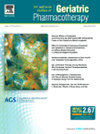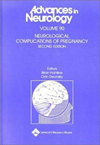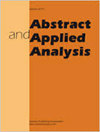期刊简介
The Shape Memory and Superelasticity journal invites original peer-reviewed papers that focus on shape memory materials research with contributions from materials science, materials engineering, experimental and theoretical mechanics, mathematics and physics. Of particular interest is to understand the response of these materials to external stimuli such as force, displacement, temperature, magnetic fields, irradiation, corrosive media and so on in pursuit of uncovering new phenomenon, new materials and new applications as follows: (i) the journal papers will examine these materials utilizing the principles of continuum mechanics, micromechanics, microstructuraly informed constitutive modeling, atomistic models, mathematics of microstructures and other methodologies. (ii) the development and use of advanced experimental techniques to expose and understand the shape memory response including thermal and mechanical cycling, application of magnetic and other external fields, (iii) the exploration and further understanding of shape memory materials due to fatigue, fracture and environmental factors are of significant interest, (iv) novel applications of the materials will be explored in all areas including bio-medical devices, actuators, thin films, robotics, mechanical and aerospace engineering components, civil engineering structures, and micro-electromechanical systems (MEMS). Specifically, the journal will include the following topics: (1) Behavior of all classes of shape memory materials including metals, non-metals (such as shape memory ceramics, shape memory polymers) and shape memory composites, (2) Stress-strain response in thermo-mechanical loadings (experimental observations and modeling), (3) Life prediction methodologies (different approaches including fracture mechanics, role of grain boundaries, the role of slip and twinning on shape memory behavior, crack nucleation modeling), (4) Thermodynamics of the transformation, the fundamentals of superelasticity and related areas such as twinning, detwinning, residual martensites, (5) Solutions of shape memory problems in industry (including biomedical, electronic, MEMS, microdevice and microactuator applications and applications in aero-, civil-, mechanical, electrical and other engineering disciplines), (6) Critical experiments that shed insight into shape memory behavior including digital image correlation, diffraction methodologies (including those using high energy sources), in-situ microscopy, infra red imaging techniques, and conventional and nano mechanical testing methods, (7) Novel experimental techniques for shape memory response (ranging from specimens of micron size, wires, laboratory specimens, rings, bent beams, complex shapes to components, and complex loading conditions), (8) Single Crystals and polycrystals of shape memory metals highlighting the role of texture and orientation effects on superelasticity and recoverable strain levels, and the role of different processing methods on the SMA response, (9) Shape memory response under coupled mechanical-magnetic fields, irradiation effects, magnetic shape memory and thermo-caloric effects, high temperature applications, (10) Alloy design (with cognizance of the chemical composition of underlying phases and crystallography) to tailor the properties to achieve shape memory materials with improved functionality in applications, (11) Surface engineering, corrosion and interaction of SMAs with fluids, behavior of shape memory thin films, and shape memory at nanoscale, (12) Application of atomistic methods (density functional theory and molecular dynamics) to gain insight into properties of such materials and enlighten shape memory alloy design with these materials, (13) Production and processing of shape memory alloys, including shape memory metals, shape memory polymers, shape memory ceramics, thin films, nanosize objects and specimens, and hybrids. Niche- The Journal of Shape Memory and Superelasticity supplies the readers with knowledge focused on shape memory materials and highlighting contributions that could influence other disciplinary fields in engineering, sciences, and medicine. The journal brings together the latest innovations in this ever-expanding field. The journal provides a forum for researchers, scientists and engineers of varied disciplines to access information about shape memory materials. The journal is aimed at disclosing the most pertinent needs in this area and providing a systematic approach to address these needs with experiments, theory and simulation. Articles are authored to describe results from original research and provide technical information that can be appreciated by readers in the subdisciplines while providing significant results that may foster research in applications and related areas. Therefore, the information provided can be utilized in many different disciplines, including medical device design, energy harvesting, structural damping and so on.
《形状记忆与超弹性》杂志邀请来自材料科学、材料工程、实验和理论力学、数学和物理领域的原创同行评审论文,重点关注形状记忆材料的研究。特别感兴趣的是了解这些材料对外部刺激的响应,如力、位移、温度、磁场、辐射、腐蚀介质等,以寻求揭示新现象、新材料和新应用,如下:(i)期刊论文将利用连续介质力学、微观力学、微观结构信息本构模型、原子模型、微观结构数学和其他方法学的原理来研究这些材料。(ii)开发和使用先进的实验技术以暴露和理解形状记忆响应,包括热和机械循环,磁场和其它外部场的应用,(iii)对由于疲劳、断裂和环境因素引起的形状记忆材料的探索和进一步理解具有重要意义,(iv)将在所有领域中探索材料的新应用,包括生物医学装置、致动器、薄膜、机器人、机械和航空航天工程部件、土木工程结构和微机电系统(MEMS)。具体而言,该期刊将包括以下主题:(1)各类形状记忆材料的行为,包括金属、非金属(例如形状记忆陶瓷、形状记忆聚合物)和形状记忆复合材料,(2)热机械载荷下的应力应变响应(实验观察和建模),(3)寿命预测方法(不同的方法包括断裂力学、晶界的作用、滑移和孪晶对形状记忆行为的作用、裂纹成核建模),(4)相变的热力学、超弹性的基本原理以及诸如孪晶、退孪晶、残余马氏体(5)工业中形状记忆问题的解决方案(包括生物医学、电子、MEMS、微器件和微致动器应用以及在航空、土木、机械、电气和其它工程学科中的应用),(6)深入了解形状记忆行为的关键实验,包括数字图像相关性、衍射方法(包括使用高能量源的那些)、原位显微术、红外成像技术,以及常规和纳米机械测试方法,(7)形状记忆响应的新型实验技术(范围从微米尺寸的样品、线、实验室样品、环、弯曲梁、复杂形状到部件和复杂负载条件),(八)单晶和多晶的形状记忆金属突出的作用,纹理和取向效应的超弹性和可恢复应变水平,以及不同加工方法对SMA响应的作用,(9)在耦合的机械-磁场下的形状记忆响应、辐射效应、磁形状记忆和热-热效应、高温应用、(10)合金设计(了解基础相的化学成分和结晶学)为了调整性能以获得在应用中具有改进功能性的形状记忆材料,(11)表面工程,SMA与流体的腐蚀和相互作用,形状记忆薄膜的行为,以及纳米尺度的形状记忆,(12)应用原子方法(密度泛函理论和分子动力学)来深入了解这些材料的性质并启发使用这些材料的形状记忆合金设计,(13)形状记忆合金的生产和加工,包括形状记忆金属、形状记忆聚合物、形状记忆陶瓷、薄膜、纳米尺寸物体和样品以及混合物。利基-形状记忆和超弹性杂志为读者提供知识集中在形状记忆材料和突出的贡献,可以影响其他学科领域的工程,科学和医学。该杂志汇集了这一不断扩展的领域的最新创新。该杂志为不同学科的研究人员、科学家和工程师提供了一个论坛,以获取有关形状记忆材料的信息。该杂志旨在揭示这一领域最相关的需求,并提供一个系统的方法来解决这些需求的实验,理论和模拟。文章旨在描述原始研究的结果,并提供子学科读者可以理解的技术信息,同时提供可能促进应用和相关领域研究的重要结果。因此,所提供的信息可用于许多不同学科,包括医疗器械设计、能量收集、结构阻尼等。
《Shape Memory and Superelasticity》期刊已被查看: 次









